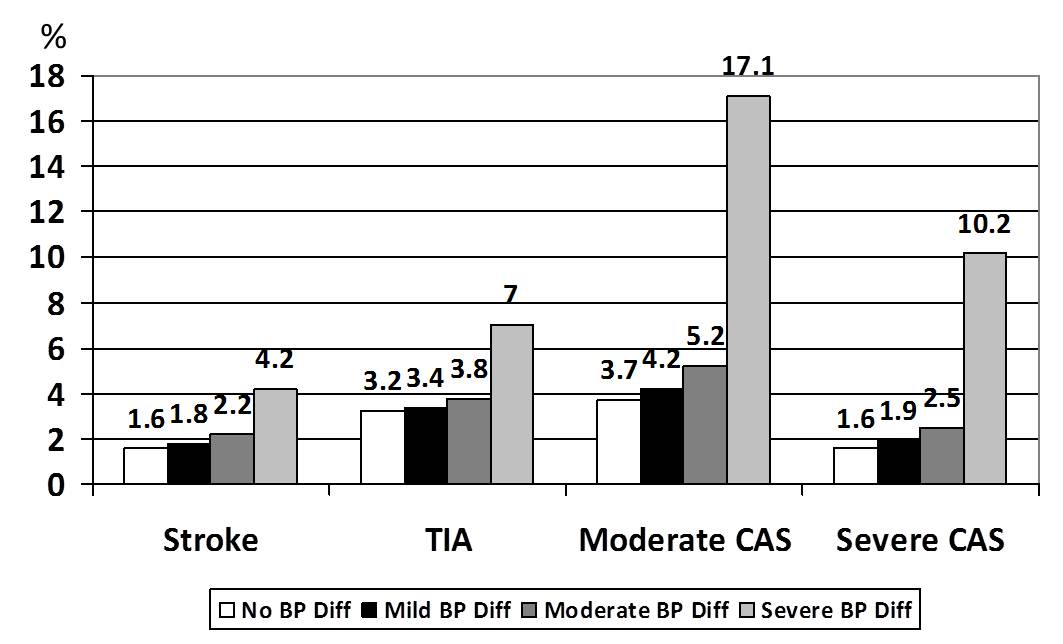|
|
 |
Back to Annual Meeting Symposium
Upper Extremity Blood Pressure Differential Strongly Predicts Cerebrovascular Disease and Carotid Artery Stenosis
Karan Garg, MD, Jeffrey S. Berger, MD, Yu Guo, MS, Mark A. Adelman, MD, Glenn R. Jacobowitz, MD, Thomas S. Maldonado, MD, Thomas S. Riles, MD, Caron B. Rockman, MD.
NYU Langone Medical Center, New York, NY, USA.
Objectives: An upper extremity (UE) systolic blood pressure (SBP) differential has been reported to be a marker for systemic atherosclerosis. However, the relationship between the degree of SBP differential and the prevalence of cerebrovascular disease has not been specifically defined. The goal of this study was to analyze a large cohort of patients who underwent vascular screening tests, and to determine the relationship between an UE SBP differential, clinical cerebrovascular disease, and carotid artery stenosis.
Methods: Of 3,696,778 patient screened, 241,959 did not have both UE SBP recorded, and were excluded. The remaining subjects were characterized as having no significant SBP difference (< 10 mm Hg differential), mild (11-15 mm Hg), moderate (16-20 mm Hg), and severe (≥ 20 mm Hg) differences. Standard statistical analysis was performed.
Results: Of 3,454,819 subjects, 86.8% had no significant UE SBP differential; 9.1% (313,352) had a mild difference, 3.9% (134,278) had a moderate difference, and 0.2% (7,657) had a severe difference. Increasing degrees of UE SBP differential were directly and significantly associated with increased age, tobacco use, hypertension, hypercholesterolemia, diabetes, and obesity (p<.001). Increasing degrees of UE SBP differential were directly and significantly associated with a history of stroke, and a history of TIA. Increasing degrees of UE SBP differential were directly and significantly associated with both moderate (≥50%) and severe (≥80%) carotid artery stenosis (p<.001) (Figure 1). In multivariate analysis, an UE SBP difference of ≥ 15 mm Hg was an independent predictor of carotid artery stenosis (OR 1.3); a differential of > 20 mm Hg nearly quadrupled the risk of having significant carotid artery disease (OR 3.9).
Conclusions: Subjects with UE SBP differentials are more likely to have traditional atherosclerotic risk factors. However, even after adjusting for these risk factors, an UE SBP difference is an independent risk factor for cerebrovascular disease. SBP differentials noted in the upper extremities can be potentially used as an excellent screening marker for the presence of extracranial cerebrovascular disease.

Back to Annual Meeting Symposium

|


